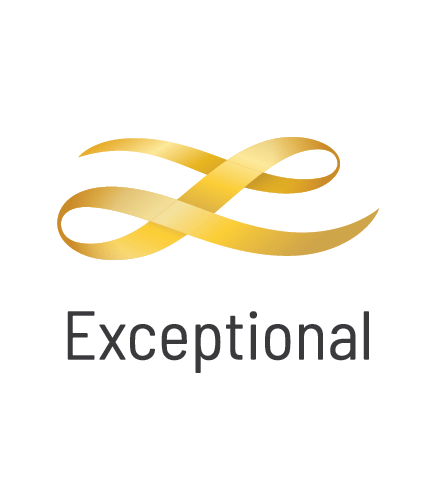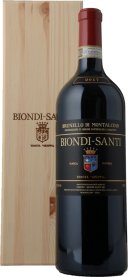Chateau Pontet-Canet 5me cru classe
Chateau Pontet Canet is a large Pauillac estate that can trace its origins back to 1725, when Jean-François Pontet gave his name to the estate he had acquired. The wine was not château-bottled until 1972 and in 1975 the property was sold to Guy Tesseron, who also owns Château Lafon-Rochet in St-Estephe. Today it is owned and run by Alfred and Michel Tesseron. Pontet-Canet's 78 hectares of vineyards adjoin those of Mouton Rothschild and are planted with Cabernet Sauvignon (63%), Merlot (32%) and Cabernet Franc (5%). The Tesserons have vastly improved the quality of the Pontet-Canet wines which are now full-bodied and packed with ripe, chewy, black fruits and finely integrated tannins. The wines have great ageing potential. Pontet-Canet is classified as a 5ème Cru Classé.. It was the first major Bordeaux wine producer to earn official organic certification, and its biodynamic production is a hallmark of its current operations.
Chateau Pichon-Longueville Baron 2me cru classe
Chateau Pichon-Longueville Lalande 2me cru classe
The history of Chateau Pichon-Longueville Baron is a tale of two estates. The chateau and vineyard known as Pichon Baron was given in dowry to the founders daughter when she married Jacques du Pichon Longueville. After the death of their descendent, the Baron Joseph de Pichon Longueville, in 1850 the estate was again divided - on his deathbed, he gave what became Chateau Pichon Baron to the men of his family, and what became Chateau Pichon Lalande to the women - resulting in, some say, more masculine and sensuous styles of wine respectively! Between the 1960s and the 1980s, the estate went through a period of rather lacklustre production - however, since 1990, they have been producing, according to many, some of the best wines in their history. The 2016 has earned high praise and glowing comparisons to their legendary 1990 Pichon Baron.
Chris Ringland Dry Grown Barossa Ranges Shiraz
Chris Ringland's Barossa Ranges Shiraz is steeped in the Barossas post-colonial story and the high art and science of winemaking. Typically deep in colour with intense dark berry, paneforte, espresso roasted chestnut aromas, it displays a plush and concentrated palate with blackberry, mocha, paneforte spicy flavours and dense fine chocolaty tannins. Despite the opulence, flamboyance, richness and concentration, the wine has superb percussion and freshness. The wine is a small vinification of around four to five hogsheads or 1500 litres. The "unusually thick skinned" Shiraz is entirely sourced from Chris Ringland's dry-grown vineyard on the edge of the Barossa Valley, but technically in Eden Valley, along Flaxman's Valley near Randall's Hill. The wine is "painstakingly hand-made" in open fermenters and regularly pumped-over to extract colour, flavour and tannins. After draining and pressing through a traditional basket press, fermentation is completed in 100% new French oak hogsheads. A period of up to 50 months oak maturation follows to achieve optimum complexity and balance between oak and fruit. The extraordinarily high release prices (higher than Penfolds Grange), limited production and reputation make Chris Ringland Barossa Ranges Shiraz the stuff of legend.
Château Haut-Brion Pessac-Léognan
Simply a wine of true perfection. 2009 in Bordeaux has bestowed many a Châteaux with a wine for the ages and in iconic estates like Château Haut-Brion, the wines have been lifted to 'nirvana-ish' levels. One wouldn't be adverse to simply sitting on the nose of this wine for hours without having a want to taste it such is the complexity and aromatic waves that are present. In the mouth though, this Pessac-Léognan boasts flavours of cigar, raspberries, plums, figs and blueberries with a finish that seems to go on for decades. Breathtakingly stunning.
Château Tertre Roteboeuf Saint-Émilion
Château Tertre Roteboeuf may have a quirky sounding name that at first has no connection to grand wines of Saint-Émilion, yet the wines produced here of utmost elegance, purity and not surprising for Saint-Émilion, plushness. With the blend consisting of Merlot and Cabernet Franc, Roteboeuf's wines are smooth, voluptuous and with tannins that are attractively loose-knit. The 1990 is a vintage for the ages and has proven to be one of the great cellaring vintages as well. Already 20 years in the bottle has not turned down the volume on this remarkable right bank Bordeaux.
Penfolds Block 42 Kalimna Cabernet Sauvignon
Penfolds' Block 42 vineyard is one of the most historic Cabernet vineyards in the world. Planted only 30 years after the 1855 Bordeaux Classification, Block 42 has the oldest plantings in the world that have continuously produced Cabernet Sauvignon. This unique history is harnessed by Peter Gago in the 2004 Block 42 Kalimna Cabernet that has produced a beautifully aromatic, perfectly balanced and ripe Cabernet Sauvignon. The fruit simply explodes across the palate, giving tremendous depth and length of flavour. While young, plush and full-bodied today, the Block 42 has many years of ageing ahead of it and will be comfortable in your cellar well into the 2020s.
Domaine Comte Georges de Vogüé Chambolle-Musigny
Domaine Comte Georges de Vogüé is inextricably linked to the history of the Grand Cru vineyard at Musigny. A rich, family history has paved the way of the Domaine to produce exceptional wines like this 2005 Chambolle-Musigny. Described by many as displaying a kaleidoscope of fragrance and flavour, the 1995 Chambolle is drinking effortlessly currently and is perfectly paired with game dishes.
Biondi Santi Tenuta Greppo
CHATEAU HAUT BRION 1er cru classe
Chateau Haut Brion is one of the five first Growths of the 1855 Classification of the Medoc. The Chateau was established in 1533 by Jean de Pontac, who was the first to plant vineyards on this prime gravelly site, found in the Graves sub-region of Pessac Leognan. The Chateau is owned today by Prince Robert of Luxembourg, the great grandson of Clarence Dillon. It is planted to Cabernet Sauvignon, Merlot, Cabernet Franc and Petit Verdot, with three hectares planted to the white varieties of Semillon and Sauvignon Blanc. Chateau Haut Brion is the only property outside of the Medoc in the 1855 classification. A wine of class and breed, Chateau Haut Brion is typically more approachable in its youth, showing floral perfume and elegance, yet possesses the structure required for exceptional longevity.






















